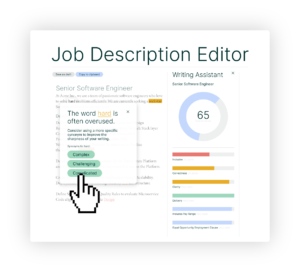28 Nov, 2022
by Raghu Gollamudi
There are increasing demands from shareholders and the public for companies to prioritize diversity & inclusion in the automotive industry; mentions of DEI on S&P 500 earnings calls have increased 658% since 2018. Data-driven diversity, equity, and inclusion (DEI) initiatives are essential for building strong, successful businesses in the automotive industry. For these efforts to be truly effective, DEI initiatives must be integrated into all aspects of the organization, including the entire employee lifecycle. Research shows that prioritizing DEI in the recruiting and hiring process not only creates brand-building opportunities, but also correlates with better financial performance (McKinsey).
As an HR leader in the automotive industry, it is important to understand the role that diversity and inclusion software can play in helping to meet both HR and business objectives. This software can automate, track, and improve DEI goals while providing valuable insights and analysis to help identify areas of improvement.
One of the key benefits of DEI software is its ability to identify diversity gaps within the organization. Before any steps can be taken to improve diversity hiring processes, it is important to understand where current gaps exist. A diversity and inclusion software platform can provide a comprehensive analysis of the data to show where equity gaps exist and where improvements can be made. For example, if one of the company’s goals is to improve the representation of BIPOC employees, the software can provide a detailed breakdown of the current representation of BIPOC employees within the organization and identify areas where representation is lacking. This information can then be used to create targeted action plans and initiatives to address these gaps.

Included’s Organizational Health scorecard
Another key benefit of DEI software is its ability to reduce unconscious bias in the recruiting and hiring process. Unconscious biases are social stereotypes about certain groups of people that individuals form outside of their own conscious awareness. These biases can have a significant impact on the recruiting and hiring process, leading to a lack of diversity and equity within the organization. DEI software can provide valuable insights into areas where there are equity gaps in the hiring funnel. For example, if a particular demographic is underrepresented at a certain stage of the hiring process, the software can identify this and provide guidance on how to address it. This can include recommendations for policy and process changes to reduce bias and increase equity.

Included’s Diversity Recruiting module mitigates bias in the hiring funnel
DEI software can also provide objective analysis of the recruiting and hiring process. It can be difficult to remain objective when identifying unconscious bias and pinpointing diversity gaps, but DEI software can help eliminate the subjectivity of this analysis by providing accurate data. A study by Accenture found that there is often a “large gap between what leaders think is going on and what employees say is happening on the ground.” This level of subjectivity can be particularly challenging when it comes to DEI efforts, but DEI software can help to remove this subjectivity by providing objective, measurable data. This ensures that leaders have an accurate picture of what is happening on the ground and can make data-driven decisions to improve DEI efforts.
In addition to providing valuable insights and analysis, DEI software can also help to create more inclusive job descriptions. One of the easiest ways to increase diversity in the workplace is to rework job descriptions to be more inclusive and equitable. This can include reducing the use of gender-coded language, making sure that job descriptions are accessible to people with disabilities, and ensuring that job requirements are not discriminatory. However, this can be a challenging task, as it requires a deep understanding of DEI best practices and the ability to identify and address unconscious bias in language. Text analysis software can help to craft inclusive job descriptions by flagging language or phrasing that may be discouraging diverse hires and by pointing out gaps in inclusive language that could help to diversify the talent pool.

Included’s job description editor helps reduce bias
For automotive companies looking to improve their DEI efforts and reach overall business objectives, DEI software is a must-have tool. Schedule a demo to see Included’s platform in action and learn how it can help your company become more diverse, equitable, and inclusive.
Learn more about Included, book your demo here.
